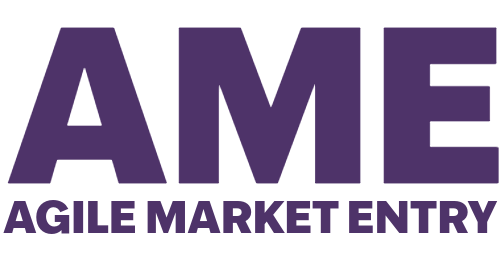
In the ever-evolving landscape of MedTech, launching a truly disruptive product requires attention to many facets of the sales process. From predicting market needs and anticipating medical market trends to timing your innovative product’s launch, each decision could determine the success or failure of your market solution. In our recent live discussion, ViaVerus’ own Chris Morrison and David Mantica tackle the particulars of product launch timing – debunking myths and unveiling strategies that promise to guide and illuminate a path for medtech innovators and disruptors. Here’s a recap.
The Paradox of Product Launch Timing
 There is an important question that looms large when launching a disruptive product: Is timing everything?
There is an important question that looms large when launching a disruptive product: Is timing everything?
At the heart of our discussion was the paradox of timing. Is it, as often proclaimed, the end-all and be-all of launching disruptive technology in MedTech, or does it hold a significance that’s more nuanced than a simple “yes or no” answer? The reality is multifaceted. Timing certainly ranks high in importance– being early to market can establish you as a leader, but being too early is problematic – the market itself cannot be rushed. Markets tend to find their relevance when the time is right.
Chris brings up a great example from the early 2000s with the genomics industry. Genomics was huge with lots of hype surrounding it, much like AI is right now. Once the human genome was decoded, technologies surrounding these findings were maturing, however, it’s taken twenty years to see serious product movement in the industry. It takes time to translate the technology into a market solution.
The point? The question of timing lies in precision – or the near impossibility of precision. Perfectly timing the launch of a disruptive innovation is as much an art as it is a science. As Chris insightfully noted, “It’s about being early but not rushing the market. You can anticipate the future but can’t dictate the exact timing of its arrival.” The key is to position your product to address a growing market need that your technology was built to meet. Now.
Kiss Of Death: “Educating the Market” – Instead of Solving Problems

When CEOs and sales leaders declare the need to “educate the market” about their new product, we know “It ain’t happening.” This approach usually indicates a disconnect, suggesting that the innovation may not be solving a genuine problem for its target audience. There’s no demand. True disruptors in MedTech succeed by addressing market needs head-on, crafting solutions informed by a deep understanding of a customer’s needs. Shifting the focus from “education” to “engagement focused on solving real problems” ensures that innovations are not just introduced but are accepted and valued by those they’re designed to help.
The Fast Follower Myth

Perhaps one of the most provocative points we discussed was the myth surrounding the concept of the “fast follower.” Conventional wisdom might argue that there’s safety in following the path forged by pioneering entrepreneurs. Yet, we shed light on why this might be a flawed strategy, especially in the dynamic world of MedTech. Embracing the role of a disruptor, of being first to market, offers an unparalleled opportunity to shape the landscape; to mold the market in ways that a fast follower simply cannot. Many successful launches dance on the line between bleeding and cutting edge. It’s not just about being first; it’s about being ready—ready to learn, adapt, see trends, and truly understand – and to serve – the market you’re effectively making. This readiness and use of Agile Market Strategy becomes an innovator’s true market-making edge.
What If We Time the Market Launch Wrong?
 The specter of failure or missteps is ever-present when discussing product launch timing. “What if we get it wrong?” This question, while daunting, opens up a realm of strategic considerations. Our discussion highlighted the importance of agility and adaptability. Many innovators find that being too early in the market can be as challenging as being too late. However, it’s not the timing misjudgment that defines your path, but your response to market penetration dynamics. Addressing markets with a more “elongated strategy”, reading market penetration trends, and adapting accordingly, decreases the likelihood of “parking projects in the garage of dead dreams”. Even a slow-market-penetration-scenario launch can be filled with lessons and market-driven data to help disruptive technology innovators “time the market” and build increased demand and success over time.
The specter of failure or missteps is ever-present when discussing product launch timing. “What if we get it wrong?” This question, while daunting, opens up a realm of strategic considerations. Our discussion highlighted the importance of agility and adaptability. Many innovators find that being too early in the market can be as challenging as being too late. However, it’s not the timing misjudgment that defines your path, but your response to market penetration dynamics. Addressing markets with a more “elongated strategy”, reading market penetration trends, and adapting accordingly, decreases the likelihood of “parking projects in the garage of dead dreams”. Even a slow-market-penetration-scenario launch can be filled with lessons and market-driven data to help disruptive technology innovators “time the market” and build increased demand and success over time.
Wrap-Up
As we wrapped up our discussion, it became evident that while timing plays a crucial role in the success of a product launch, it’s the combination of strategy, understanding, and agility that truly makes the difference. We have launched many successful, disruptive products in the MedTech market. We educate, coach, and consult product managers, sales leaders, and CEOs in MedTech, healthcare, and life sciences, on how best to time disruptive product launches to optimize market success.
Let us help strategize the best timing for your disruptive product. Contact us here.

